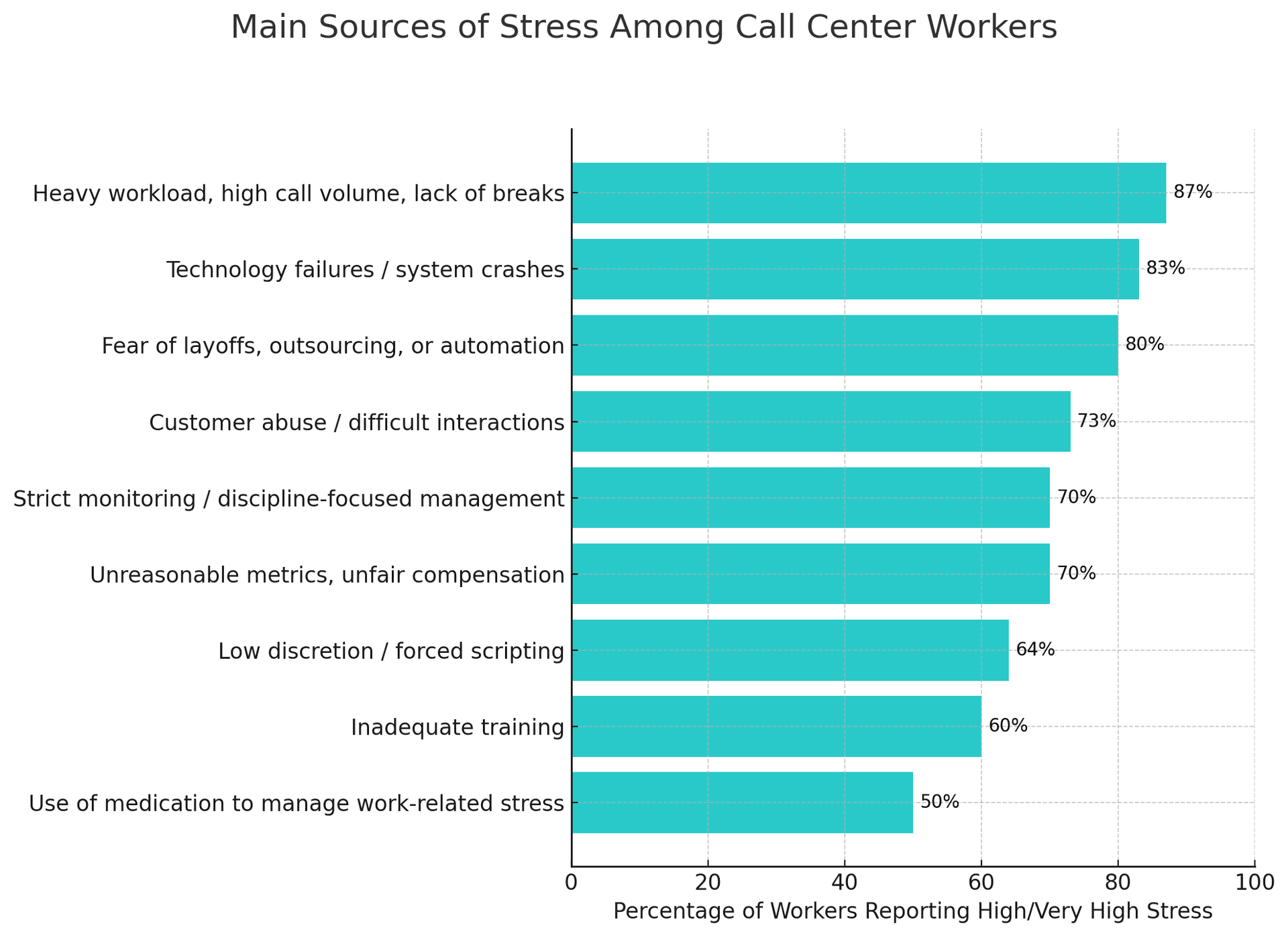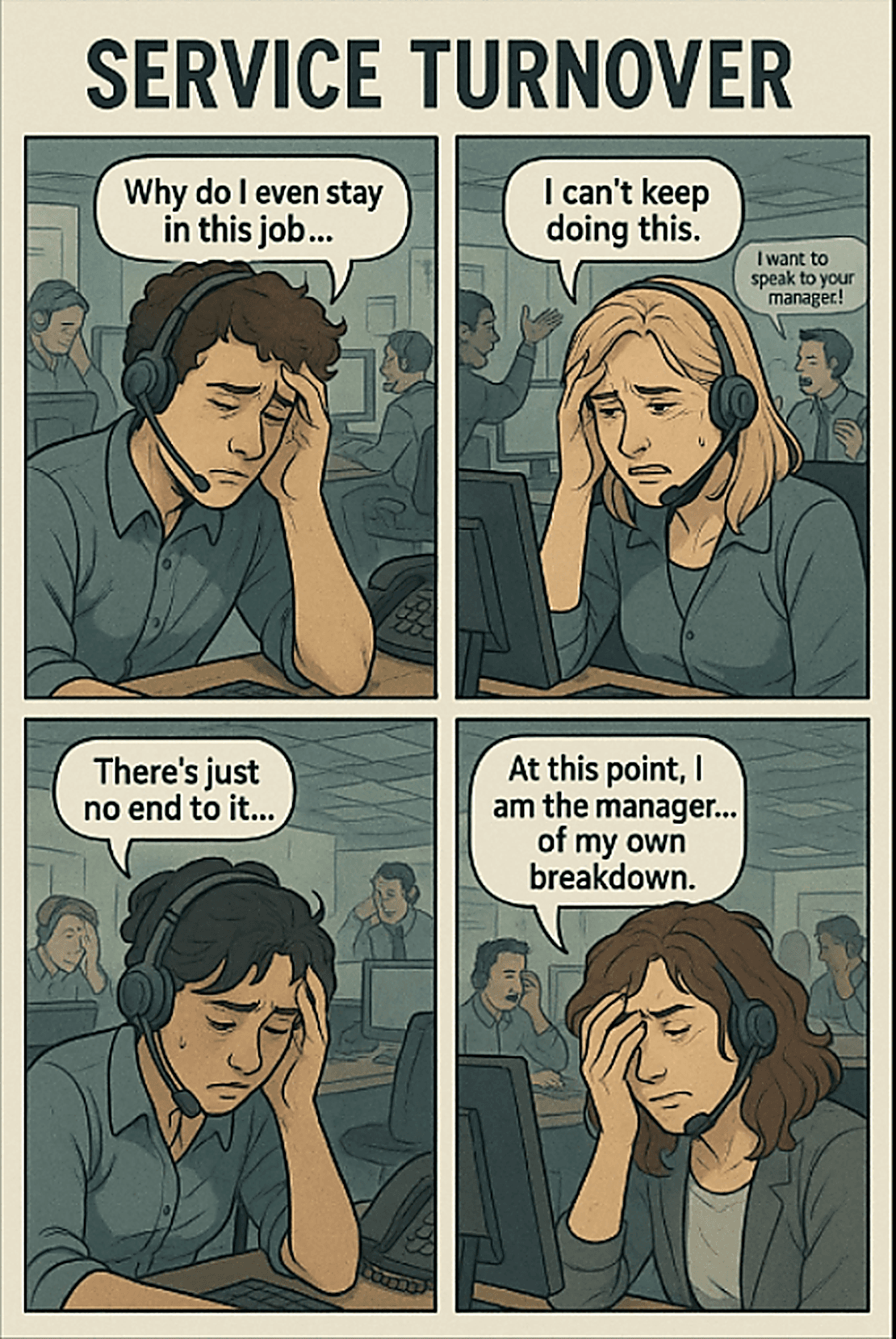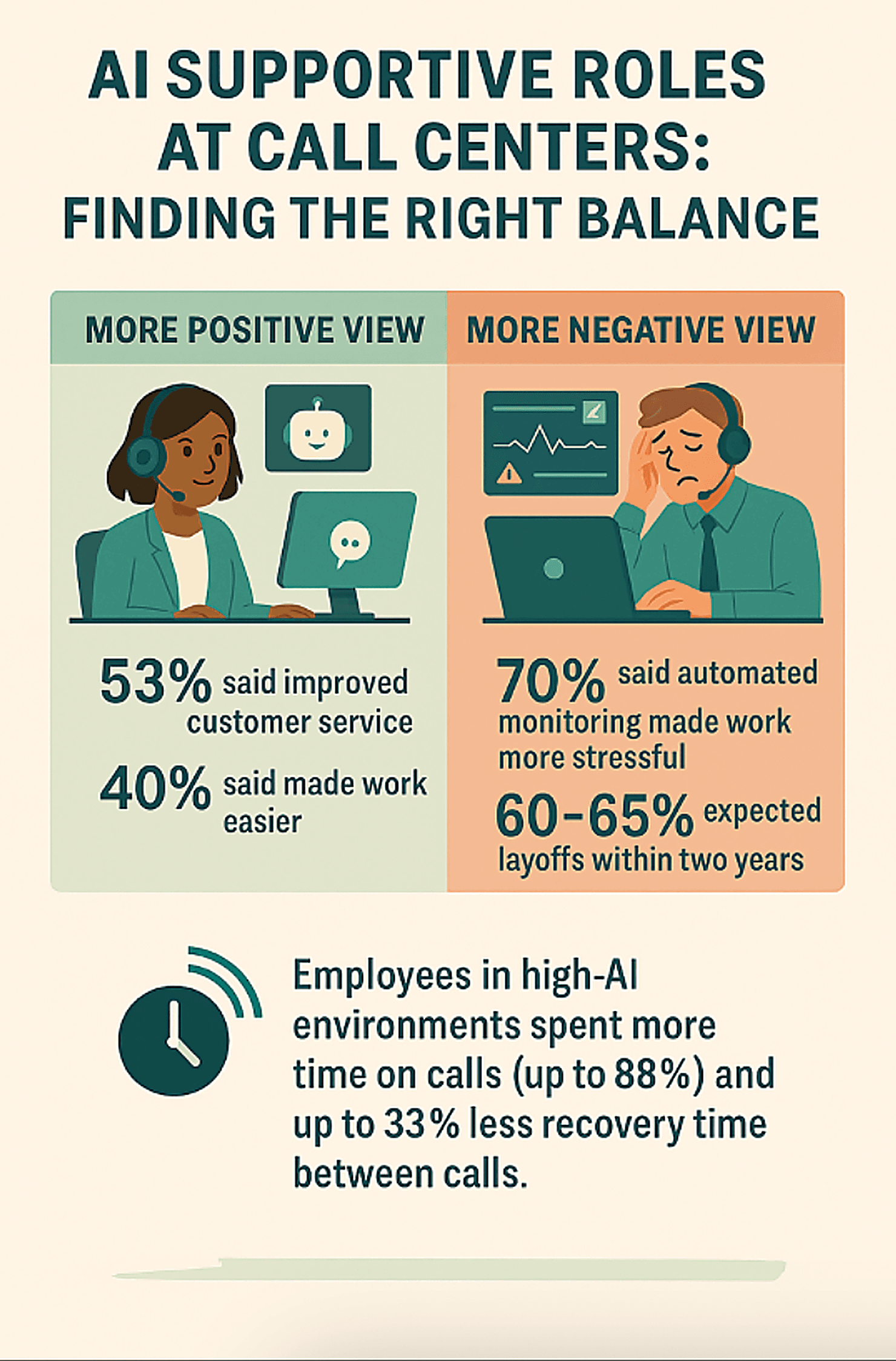The Pressure That Never Pauses
Customer service powers everyday life but for those on the front lines, the job can feel relentless. Agents juggle high call volumes, rigid scripts, and intense emotional labor. Despite training, many struggle to perform under constant scrutiny. The result: rising burnout.
Survey data by Doellgast and O’Braddy (2020) show just how heavy that load has become. 87% of agents report high workplace stress, and more than half face emotional exhaustion and sleep problems. 70% say excessive monitoring is a major strain, while 83% battle slow or failing systems that make every task harder. Nearly 3 in 4 agents endure customer abuse, and rigid scripting plus fear of layoffs strip away their sense of control. Those under the most pressure show 2.5× higher absenteeism and are 5 times more likely to quit.
Key stats
- 87% of agents report high workplace stress.
- Over half face emotional exhaustion and sleep problems.
- 70% cite excessive monitoring as a major strain.
- 83% battle slow or failing systems.
- Nearly 3 in 4 agents endure customer abuse.

The pressure rarely pauses. Agents handle dozens of conversations per hour with almost no recovery time between interactions, often with customers already frustrated before the call even begins. “I want to speak to your manager” often lands before the call has barely begun—instantly fueling anxiety and helplessness among already overworked agents.

How Generative AI Is Changing the Equation
AI’s role in customer service is shifting—from automation that replaces people to intelligence that amplifies human capability. A study by Gudipati (2025) shows that Generative AI improves every major contact center metric:

Key metrics
- Average Handling Time (AHT) ↓ by 35%
- Customer Satisfaction (CSAT) ↑ by 21%
- Training Duration (ATD) ↓ by 40%
- Resolution Efficiency ↑ by 18%
Agents using AI tools also reported 28% higher confidence based on the study findings. Features like summarization engines, sentiment detection, and real-time recommendations don’t just shorten calls—they restore focus and control. These systems turn “always-on” pressure into “always-assisted” performance, giving employees cognitive relief while boosting customer satisfaction scores.
AI’s Double-Edged Sword: Support vs. Surveillance
The figure below draws on findings from Doellgast et al. (2023), examining how contact center employees in the U.S. and Canada perceive various forms of AI adoption. The research underscores AI’s dual impact—its effects shift dramatically depending on whether it is deployed to support employees (through assistance and automation) or to supervise them (through monitoring and metrics).

According to the data, 88% of U.S. agents and 80% of Canadian agents had experience with AI tools—but their reactions differed sharply depending on the application. Work-automating AI (such as chatbots and real-time assist tools) was widely viewed as positive: 53% said it improved customer service, and 40% said it made their jobs easier.
In contrast, management-automating AI—systems for automated monitoring or performance scoring—was seen far more negatively. Seven in ten employees (70%) said these tools made work more stressful. The study also found that high-intensity AI use correlated with greater oversight, heavier workloads, and more frequent customer mistreatment. Employees in these settings spent up to 88% of their time on calls and had only 14% recovery time between interactions, compared with 33% in lower-AI environments. Finally, between 60% and 65% of workers expressed concern about potential layoffs within two years due to automation.
Together, these findings underscore a critical divide between AI that enhances work and AI that intensifies it—a balance that determines whether technology serves as a relief mechanism or a new source of strain for frontline employees.
Conclusion: Turning Turnover into Breakthrough
- The data is clear: turnover isn’t just a human challenge—it’s an operational liability. But the solution isn’t more oversight or automation for automation’s sake. It’s about building intelligent systems that work with people, not against them. Treating workplace well-being as optional is no longer acceptable. Mental health is becoming a business metric, not a wellness perk.
- The companies that win in this new landscape will be those that align AI adoption with empathy, compliance, and culture. Because the future of customer service won’t belong to the fastest centers—it will belong to the healthiest, most human-centered ones. AI should support agents, not supervise them. Empowerment—not oversight—is what keeps talent.
